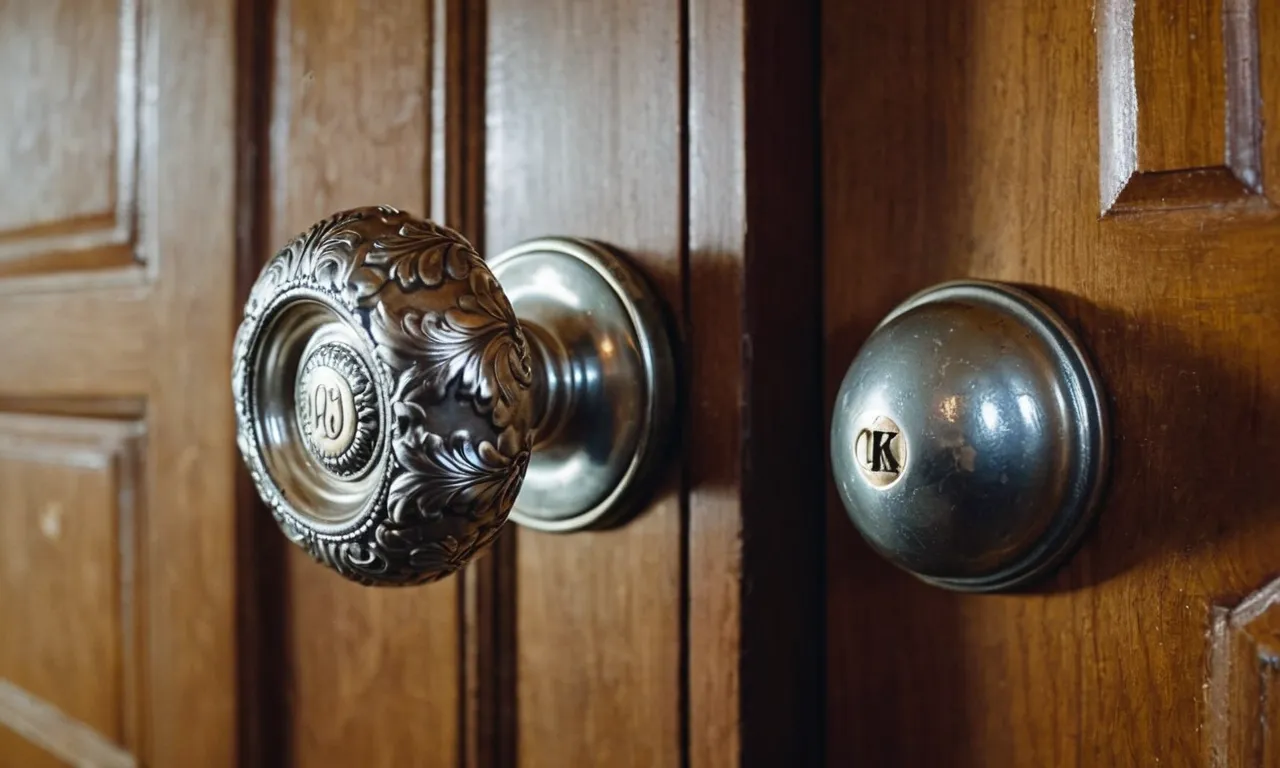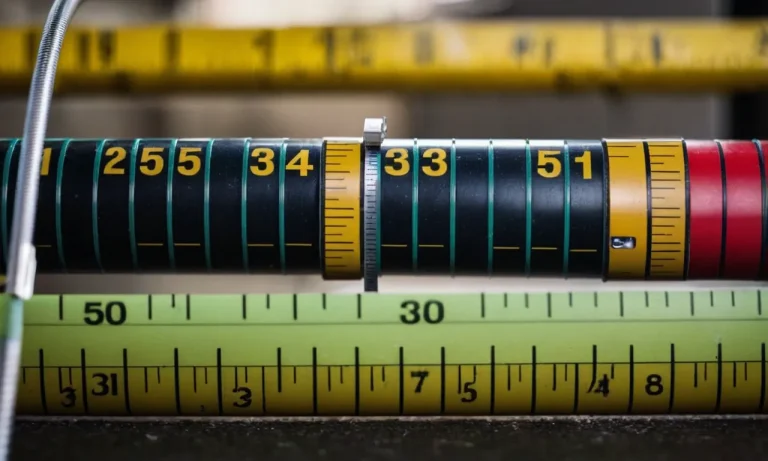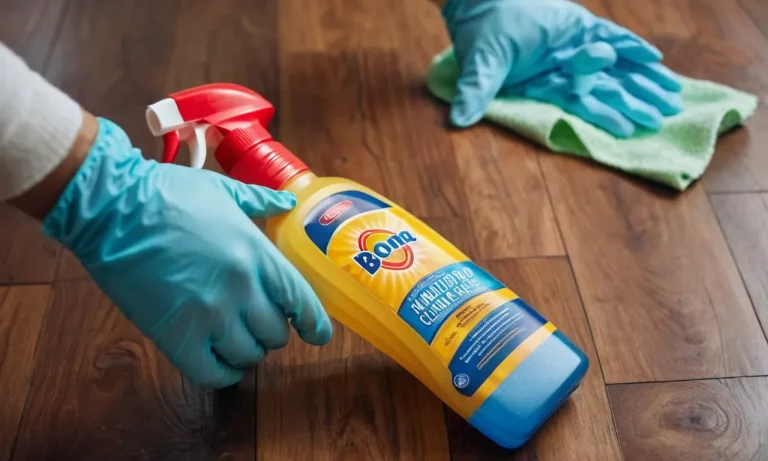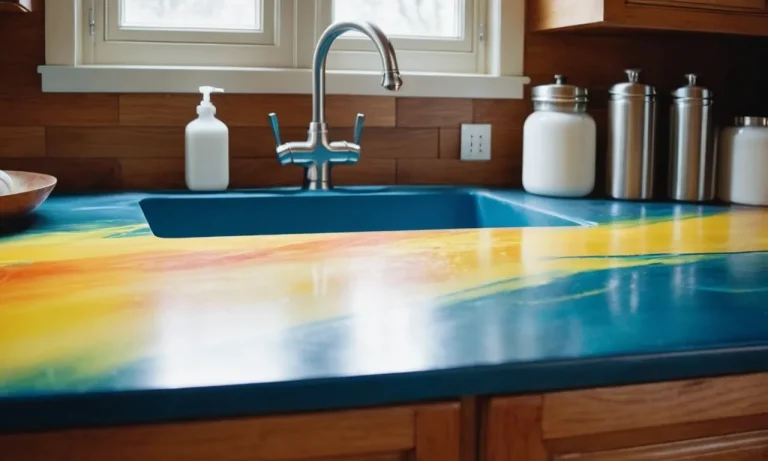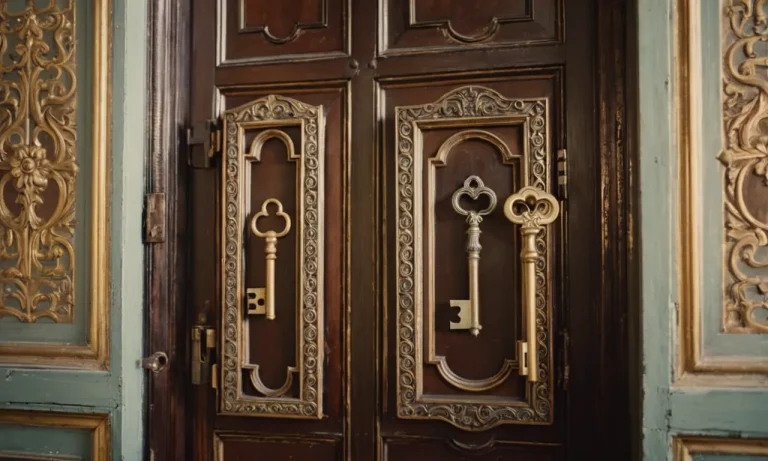Should You Put Tin Foil On Door Knobs When Home Alone? A Comprehensive Guide
You come home after a long day of work or school, ready to relax and unwind. But as you enter your empty house, a feeling of uneasiness comes over you. You start thinking, is someone already inside? Should I barricade myself in somehow? What can I do to feel safer when home alone?
If you’re short on time, here’s a quick answer: Wrapping tin foil around doorknobs when you’re home alone can act as a simple intruder alarm by making noise when the door is turned. But it has major drawbacks and is not a foolproof safety solution.
In this comprehensive guide, we’ll cover whether tin foil on doorknobs really works for home security, its pros and cons, and better ways to keep your home and yourself safe when you find yourself alone.
How the Tin Foil Alarm Works
The Noise Factor
The tin foil alarm is a simple and cost-effective DIY method to alert you of any intruders when you are home alone. The concept behind this alarm is that when someone tries to turn the doorknob, the tin foil wrapped around it will make a noise, alerting you to their presence.
This noise factor is what makes the tin foil alarm an effective deterrent against potential burglars or unwanted visitors.
When the doorknob is turned, the tin foil crinkles and creates a distinct sound, similar to the sound of rustling paper. The noise can be quite loud and can easily wake you up if you are asleep or grab your attention if you are in another part of the house.
This sudden noise can startle an intruder and potentially deter them from entering your home.
It is important to note that the effectiveness of the tin foil alarm depends on the sensitivity of your hearing and the thickness of the tin foil. Thicker foil will produce a louder noise, while thinner foil may not make enough noise to alert you.
Experimenting with different thicknesses of tin foil can help you find the right balance between noise and practicality.
Limitations of the DIY Alarm
While the tin foil alarm can be an effective method to enhance your home security, it does have its limitations. It is important to be aware of these limitations to have realistic expectations regarding the effectiveness of this DIY alarm.
Firstly, the tin foil alarm is a relatively low-tech solution and may not be as foolproof as professional security systems. It can be easily bypassed by someone who is familiar with its presence or knows how to avoid making noise when turning the doorknob.
Additionally, the alarm relies on the assumption that an intruder will attempt to enter your home through the door that is equipped with the tin foil alarm. If the intruder chooses a different entry point, the alarm will not be triggered.
Furthermore, the tin foil alarm is not a substitute for other security measures such as locks, cameras, or alarm systems. It can serve as an additional layer of protection, but it should not be relied upon as the sole means of securing your home.
Ultimately, the decision to use the tin foil alarm or any other DIY security measure is a personal one. It is important to assess your specific needs and circumstances before implementing such measures.
Consulting with a security professional or researching reputable websites, such as home-security-systems-answers.com, can provide you with valuable insights and guidance to make informed choices about your home security.
Pros of Using Tin Foil on Doorknobs
Cheap and Readily Available
One of the main advantages of using tin foil on doorknobs is its affordability and accessibility. Tin foil is a common household item that can be found in most kitchens, making it a convenient solution for securing your doors when you are home alone.
It is inexpensive and can be easily purchased at any grocery store. By using tin foil, you can ensure the safety of your home without having to invest in expensive security systems or locks.
Easy to Set Up
Setting up tin foil on doorknobs is a simple and quick process. All you need to do is tear off a piece of tin foil and wrap it around the doorknob. The malleability of tin foil allows it to conform to the shape of the doorknob, providing a snug fit.
Additionally, removing the tin foil is just as easy as putting it on, requiring no special tools or expertise. This ease of use makes tin foil a convenient option for those who want a temporary solution for securing their doors.
Did you know? Tin foil can also be used for other purposes around the house, such as lining baking sheets or preserving the freshness of leftover food. Its versatility makes it a handy item to have in your kitchen!
For more information on using tin foil on doorknobs and other home security tips, you can visit SafeWise.com, a trusted source for home safety advice.
Cons of Using Tin Foil on Doorknobs
Not Reliable Enough
While using tin foil on doorknobs may seem like a simple and cost-effective way to protect your home, it is important to consider its reliability. Tin foil can easily tear or be dislodged, rendering it ineffective in preventing unauthorized access to your home.
In situations where reliability is crucial, such as when you are home alone and concerned about your safety, it is advisable to rely on more secure and proven security measures.
Can Be Removed by Intruder
An intruder who is determined to gain access to your home can easily remove the tin foil from the doorknob. They can simply peel it off or use a tool to dislodge it. This means that relying solely on tin foil as a security measure may not provide the level of protection you need.
It is important to invest in more robust security systems and measures to ensure the safety of your home and yourself.
Doesn’t Prevent Break-Ins
While tin foil may create a noise or disturbance when an intruder tries to turn the doorknob, it does not actually prevent break-ins. It merely serves as a temporary deterrent by alerting you to the presence of someone attempting to enter your home.
However, it does not physically prevent or hinder unauthorized access. To effectively prevent break-ins, it is essential to invest in comprehensive home security systems, such as door and window locks, alarms, and surveillance cameras.
Possibility of False Alarms
Using tin foil on doorknobs can sometimes result in false alarms. For example, if the foil becomes loose or gets caught on clothing, it may create noise or movement that can mistakenly trigger a sense of danger. This can lead to unnecessary panic and stress.
To avoid such false alarms, it is advisable to rely on more reliable and precise security measures that are less prone to false triggers.
Better Ways to Secure Your Home When Alone
When you find yourself home alone, it’s essential to take precautions to ensure your safety and the security of your home. While putting tin foil on door knobs might seem like a creative idea, there are better ways to secure your home. Here are some effective methods to consider:
Install a Real Home Security System
Investing in a reliable home security system is one of the best ways to secure your home when you’re alone. These systems come with features like motion sensors, door/window sensors, and surveillance cameras that provide round-the-clock protection.
By having a professional security system installed, you can have peace of mind knowing that your home is being monitored and any potential threats will be detected.
Get to Know Your Neighbors
Your neighbors can be a valuable asset when it comes to home security. Building a good relationship with your neighbors creates a sense of community and increases the chances of someone keeping an eye on your property when you’re not around.
By looking out for each other, you can create a safer environment for everyone. Plus, it’s always great to have neighbors you can rely on for assistance in case of emergencies.
Keep Doors and Windows Locked
It may seem like common sense, but ensuring that all doors and windows are locked is a simple yet effective way to secure your home. Many burglars take advantage of unlocked doors and windows to gain easy access to a property.
By making it a habit to check and lock all entry points, you significantly reduce the risk of a break-in.
Use Timers for Lights and TV
When you’re home alone, leaving the lights and TV on can give the impression that someone is present, deterring potential burglars. However, it’s not practical to leave them on all the time. Instead, consider using timers to automatically turn on and off lights and the TV at different intervals.
This creates the illusion that someone is home, even when you’re not.
Don’t Post Your Plans on Social Media
While it’s tempting to share your plans and activities on social media, doing so can inadvertently alert potential criminals that your home is unoccupied. Avoid posting about being home alone or announcing your travel plans in real-time.
Save the updates for after you’ve returned home to ensure your safety and the security of your property.
Have an Escape Route Planned
It’s always wise to have an escape route planned in case of emergencies. Familiarize yourself with the layout of your home and identify potential exit points. Practice the escape route with your family members so that everyone knows what to do and where to go in case of a fire or other dangerous situations.
By implementing these better ways to secure your home when alone, you can enhance your safety and protect your property effectively.
When to Call the Police if Home Alone
Being home alone can sometimes make you feel vulnerable and unsure of what to do in certain situations. If you ever find yourself in a situation where you feel threatened or unsafe, it is important to know when to call the police for assistance.
Here are some scenarios in which it is advisable to contact the authorities:
You Hear Unusual Noises
If you are home alone and hear strange or suspicious noises coming from inside or outside your home, it is essential to take it seriously. Unusual noises could indicate that someone is trying to gain unauthorized access to your property.
In such cases, it is recommended to quickly move to a safe location within your home, lock all doors and windows, and call the police to report the incident. Remember, your safety should always be your top priority.
You See Signs of Attempted Break-In
Discovering signs of an attempted break-in can be a frightening experience, especially when you are alone. Signs such as broken windows, damaged locks, or evidence of forced entry should not be ignored. If you notice any of these signs, it is crucial to contact the police immediately.
They will be able to assess the situation, gather evidence, and ensure your safety. It is important not to touch anything or enter the premises until the police arrive, as you could potentially destroy valuable evidence.
Someone Refuses to Leave Your Property
If you are home alone and someone enters your property without permission, and then refuses to leave when asked, it is important to take action. This can be a particularly unnerving situation, and you should not hesitate to contact the police.
Provide them with accurate information about the individual, including their appearance and any other relevant details. The police will handle the situation and ensure your safety.
If you find yourself in any of these situations, remember that it is always better to be safe than sorry. Do not hesitate to call the police if you feel threatened or unsafe. It is their job to protect and serve, and they will be there to assist you in any way they can.
Conclusion
Being home alone can be an unnerving experience. A simple DIY alarm like tin foil on doorknobs may seem like an easy fix, but it has major flaws and is not dependable enough for real home security.
While nothing can guarantee complete safety, taking proactive measures like installing an alarm system, establishing ties with your community, and being prepared can help you feel more secure when you find yourself home alone.
With the right combination of precautions, you can feel assured instead of anxious the next time you have the house to yourself.

